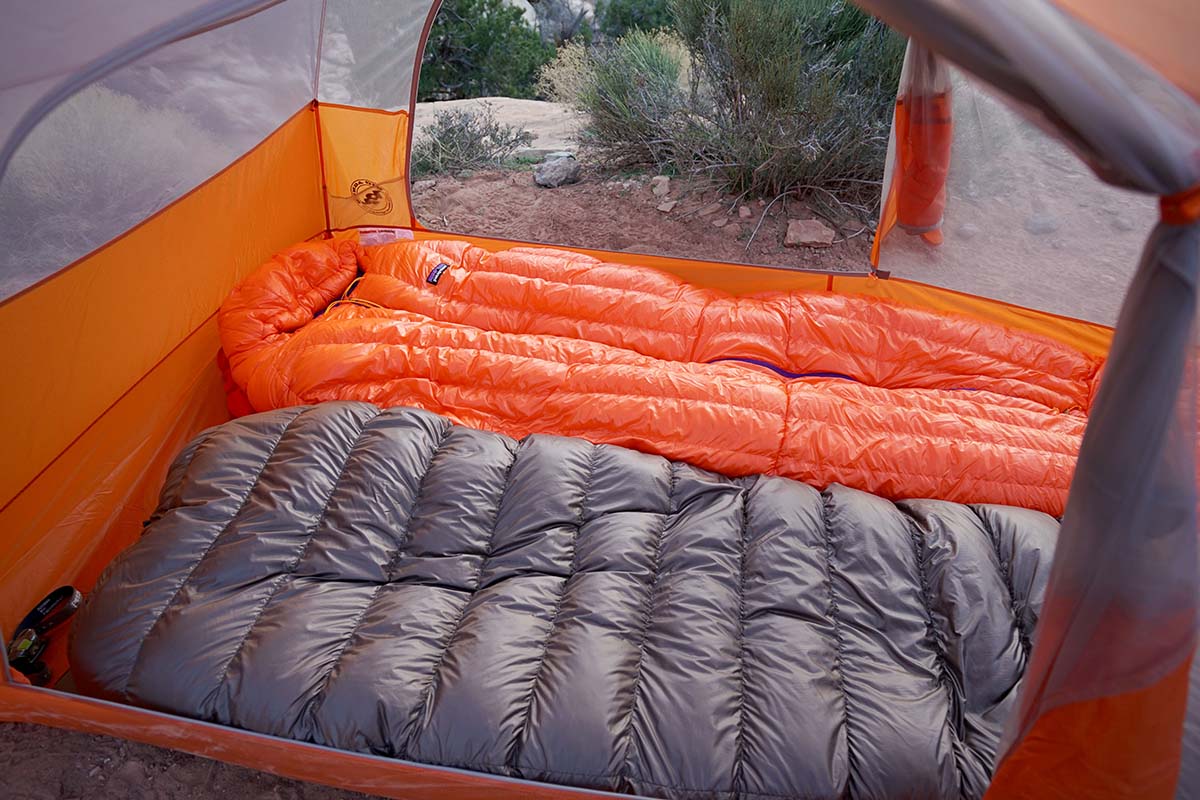
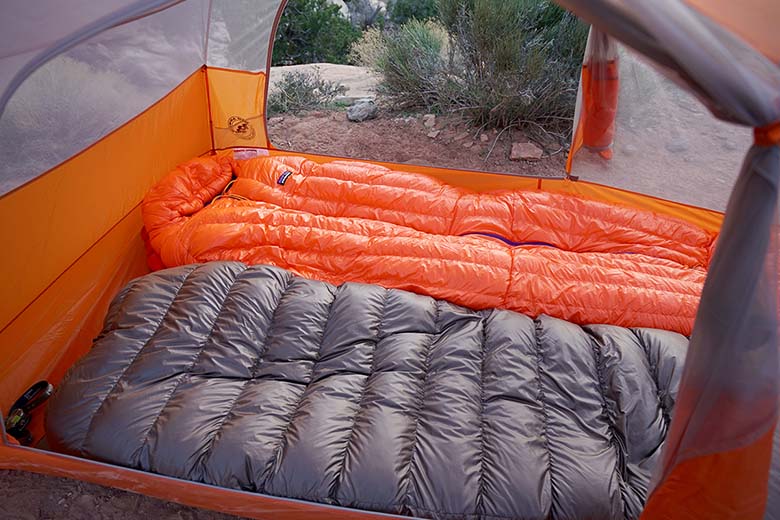
Switchback Travel


Switchback Travel
For thru-hikers, bikepackers, or anyone looking to travel light and fast, an ultralight sleeping bag or quilt is a no-brainer purchase that can shave noticeable weight and bulk from an overnight kit. But the choice between the two can be tricky, as both have advantages and disadvantages. Below we outline ultralight sleeping bags and quilts and detail their main distinctions, including warmth, weight, temperature regulation, setup, and more. For a list of our top picks and how to choose the right option for you, see our article on the best ultralight sleeping bags and quilts. And if you're willing to shoulder a little more weight, we've also put together a list of the best backpacking sleeping bags, most of which check in under 3 pounds.
Editor's note: We updated this article on June 7, 2025, to expand several advice sections, update some of our recommendations, and ensure all information—including weight, fill weight, and price—was current at the time of publishing.
Most outdoor-goers are familiar with traditional mummy sleeping bags, and ultralight sleeping bags have a similar design. Like a traditional mummy bag, ultralight sleeping bags have narrower feet, wider shoulders, and many still have hoods. The weight is dropped with thinner shell materials, higher-fill-power down, shorter zippers, and often smaller dimensions. Some ultralight bags drop the hood and zipper for a tube-style design that offers exceptional warmth for weight if you're willing to forgo those features. Like heavier mummy bags, ultralight sleeping bags are effective insulators in large part due to their draft-free design that fully encloses the body (including the head), keeping warm air in and cold air out.
.jpg)
Backpacking quilts were initially used by ultralight backpackers, thru-hikers, and hammock sleepers. But with larger brands jumping on the lightweight trend, there are plenty of readily available options for hikers dipping a toe in the ultralight world. Essentially, quilt designs build off the idea that the feathers on the underside of your bag don’t offer much in the way of insulation since they’re so compressed by the weight of your body. A quilt removes the hood and bottom from a traditional mummy bag, providing insulation only on the front and sides of your body, albeit with an enclosed footbox. The majority of designs come with pad attachments to create a closed system with your sleeping pad.
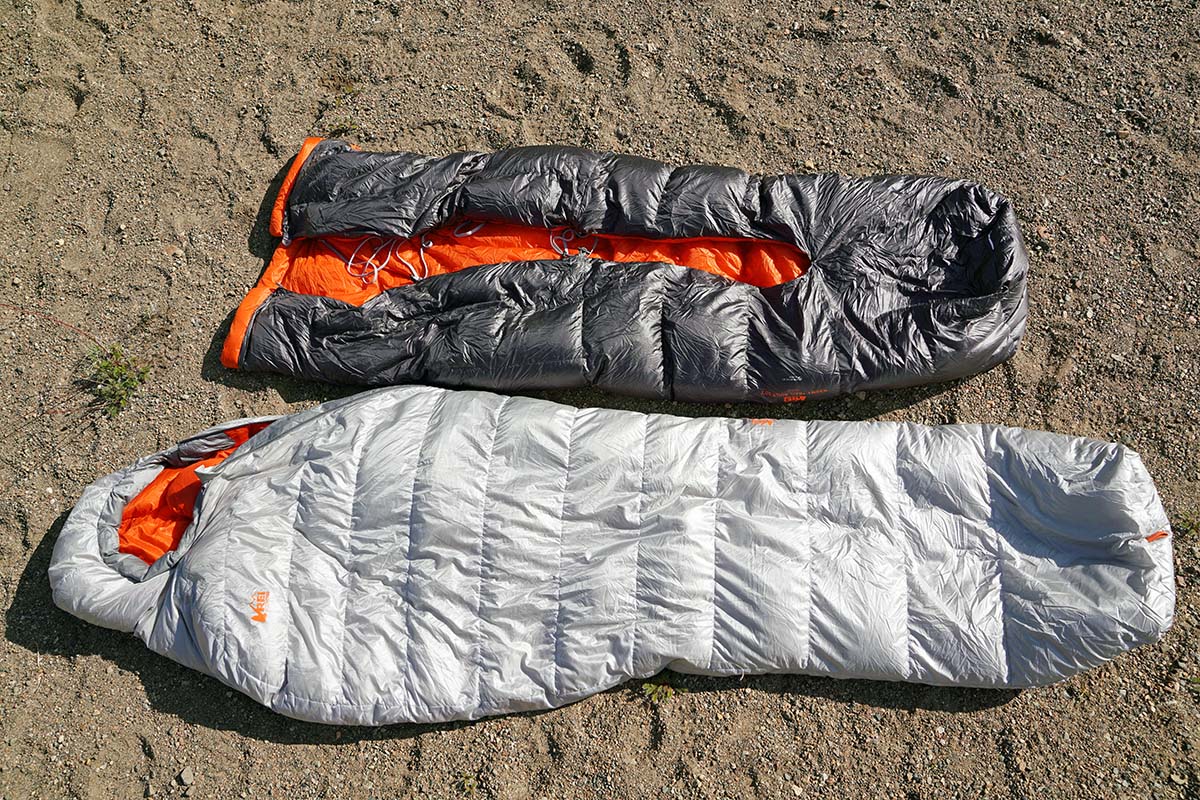
Many—although not all—quilts have rear closures that allow you to secure them around you like a sleeping bag. These closures are generally limited to one to three buckles or clips across the back opening. Some quilts also have footboxes that close shut with a zipper or bottom drawstring, giving you the versatility of using the quilt as a blanket. These closures ensure that the quilt stays around you while you sleep but do little in terms of draft protection. As a result, quilts often are lighter than sleeping bags, but don't do the best job keeping out drafts.
It’s worth mentioning the tiny subgroup of sleeping bag/quilt hybrids that retain characteristics of both styles. For example, the Feathered Friends Flicker UL essentially is a hoodless sleeping bag with a full-length zipper, and the dimensions are such that you're able to completely enclose yourself. On warmer nights, the Flicker UL unzips all the way down through the footbox and has a cinch closure at the bottom, so it functions like a quilt when you don't need the draft protection. This is a versatile, lightweight sleep systems crosses over from cold to warm better than others, and can be used as a blanket for two in a pinch.
All else being equal, sleeping bags are the winner when it comes to warmth. During a cold night, it’s hard to beat the heat retention of a tightly cinched bag and hood. Conversely, even when snugly secured to a sleeping pad, quilts cannot guarantee a draft-free sleep, nor do they extend over the head for a full cocoon.
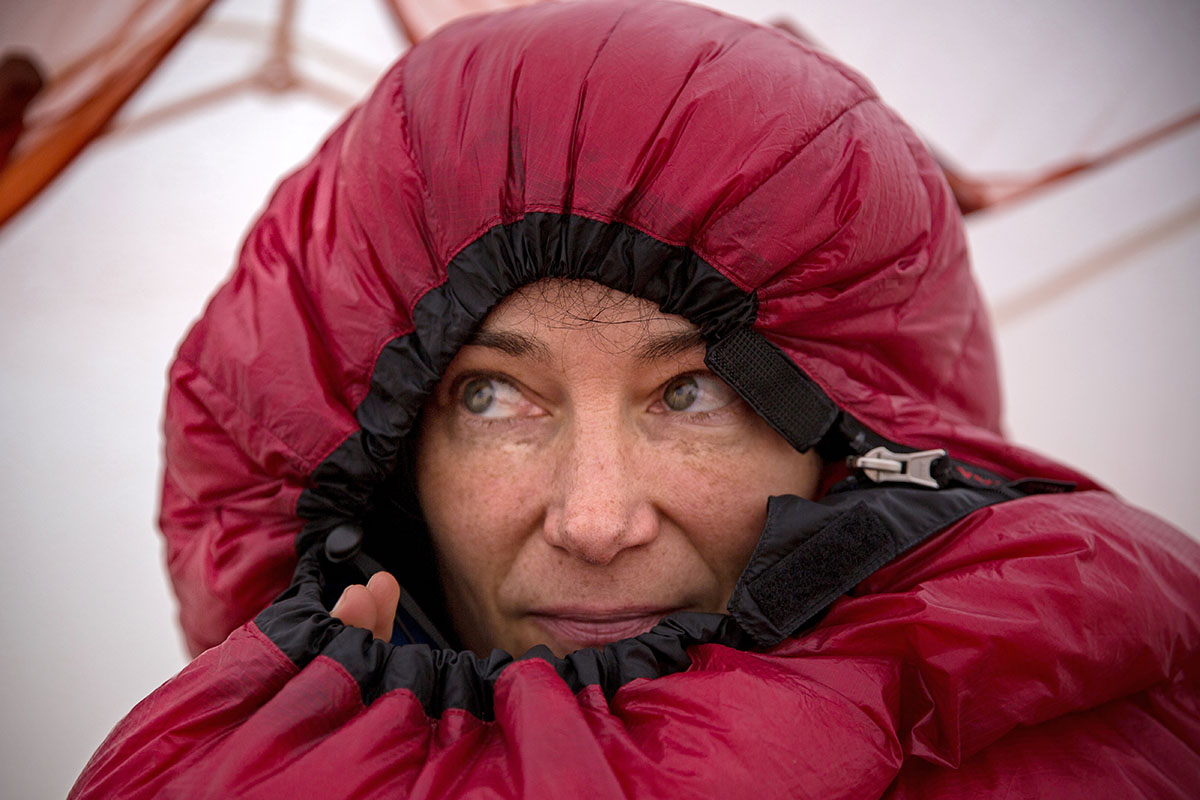
However, it's not entirely straightforward. Take a bag and quilt with the same temperature rating, like the 30-degree Sea to Summit Spark and Enlightened Equipment Enigma Quilt. The quilt actually has 3.1 ounces more down fill, which equates to more warmth on the top and sides of the body. Further, many ultralight sleeping bags sacrifice features like a hood or draft collar. This stripped-down design removes much of the heat-trapping ability of a mummy bag, bringing it closer in line with the protection of a quilt. To challenge the comparison even more, quilts don't have the same EN/ISO standardized temperature testing that many sleeping bags do (see our article on Sleeping Bag Temperature Ratings). Overall, expect a fully featured sleeping bag with similar loft to be warmer than a quilt, but it’s important to dig deeper for an accurate comparison.
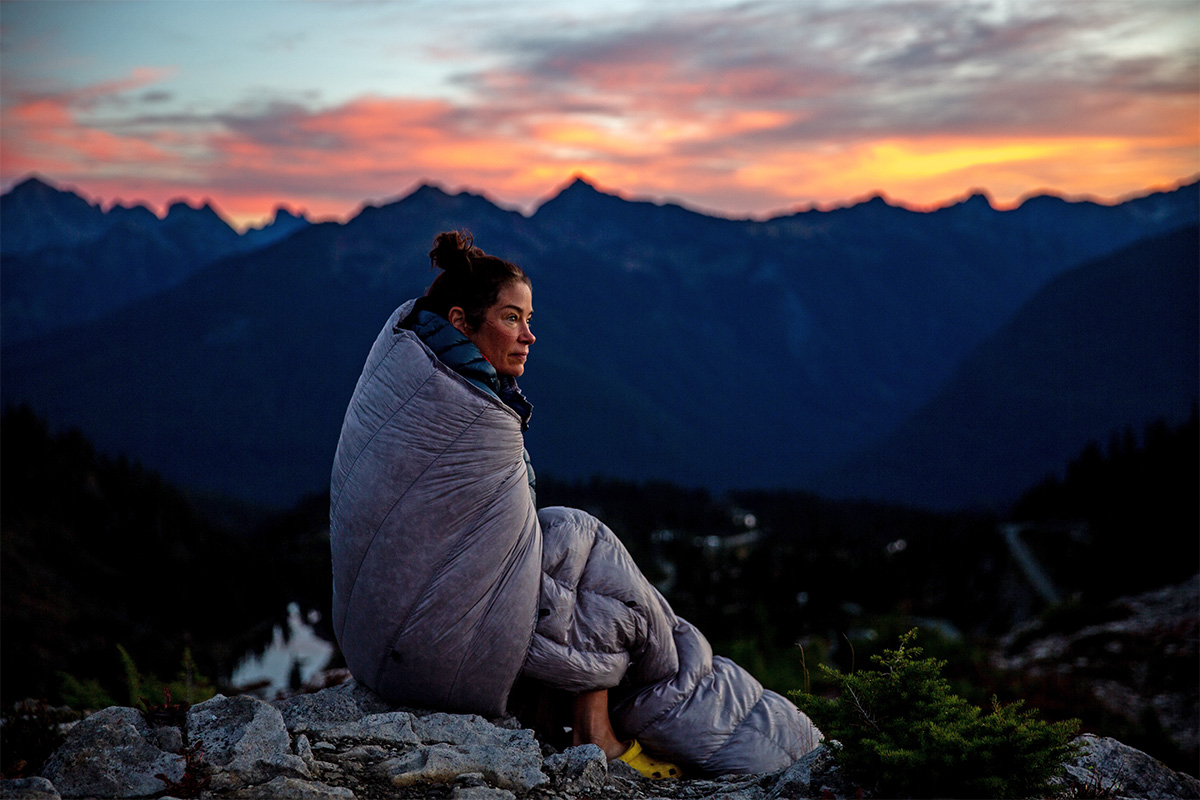
Last but not least, your sleeping pad is an important component of your sleep system whether you’re in a sleeping bag or quilt. Most sleeping pads are given a warmth rating listed in R-value (ranging from about 1 to 8), which is a good place to start when determining how well it will insulate you from the ground. Most 3-season backpackers can stick with an R-value between 3 and 5, while winter campers will want to bump up to an insulated model with R-value of 5 or more. The Therm-a-Rest NeoAir XLite NXT hits a nice balance of weight and insulation, with a lightweight build (13 oz.) and R-value of 4.5. For more on sleeping pad warmth, see our article on Sleeping Pad R-Value Explained.
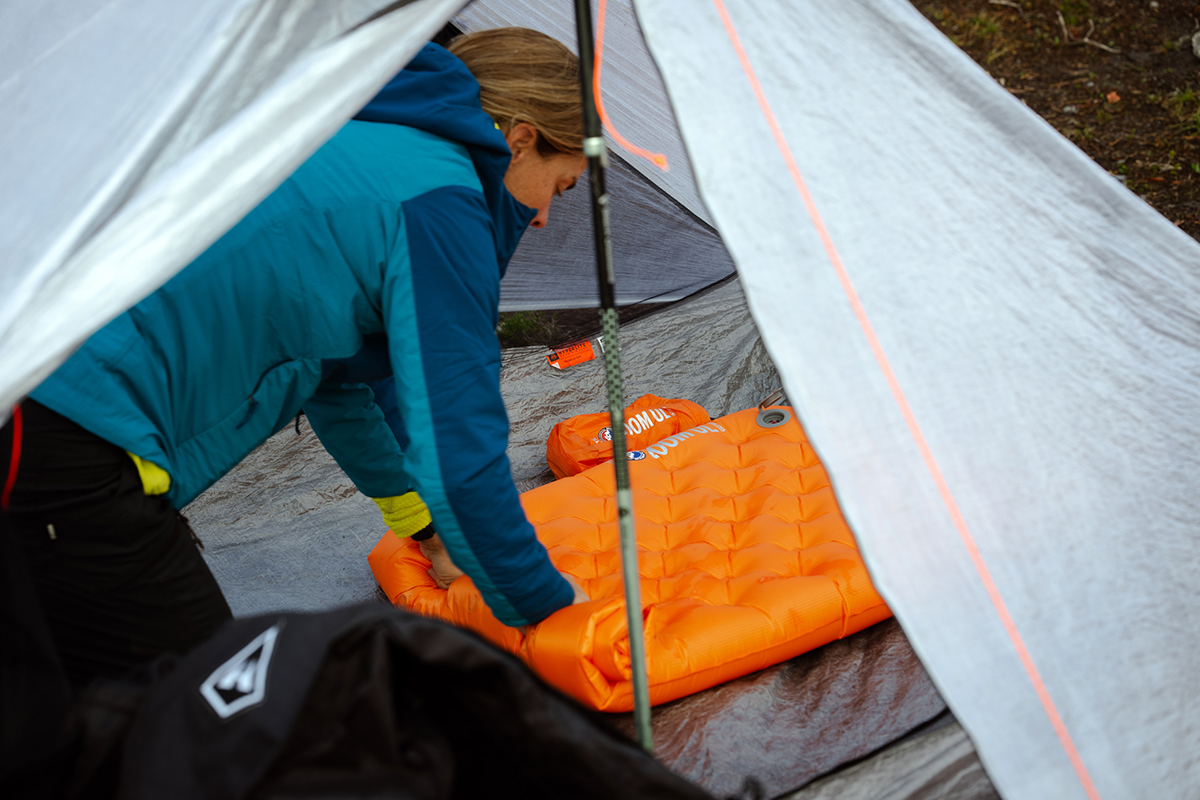
Ultralight enthusiasts always are looking for ways to shave weight, and the back of a sleeping bag is an obvious target. With less material and neither a hood nor zipper, quilts cut all superfluous features from a bag in the hopes of dropping a few ounces. In general, this does make them lighter and more packable. For example, consider the Western Mountaineering UltraLite sleeping bag and Zpacks Solo Quilt, both of which are rated to 20 degrees. Both models have similar amounts of down (16 oz. of 850-fill and 13.7 oz. of 900-fill, respectively), but the UltraLite weighs 1 pound 13 ounces versus the Solo’s 1 pound 2.7 ounces. But the difference isn’t always so stark—the medium 30-degree REI Co-op Magma Quilt weighs only 4.1 ounces less than the medium Magma 30 sleeping bag.
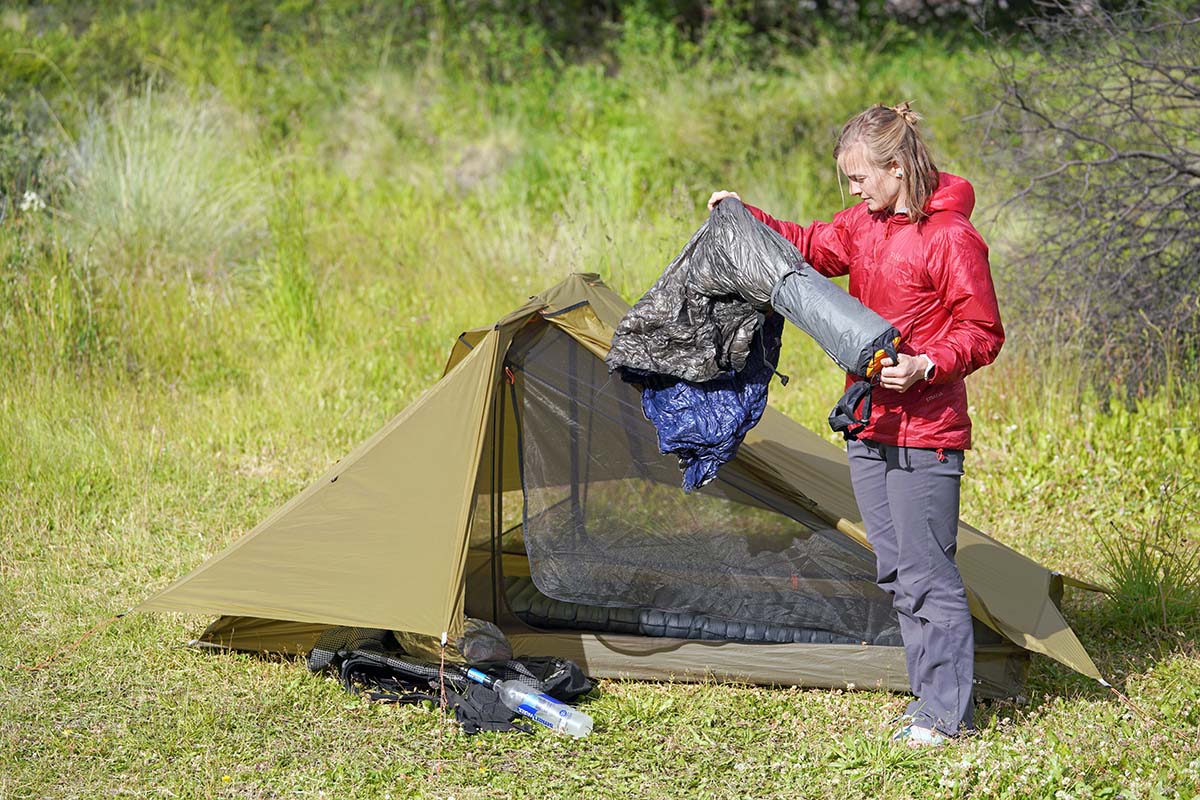
The warmth-to-weight ratio is the best way to measure the efficiency of a sleeping bag or quilt. As we’ve mentioned above, this can be a tough comparison, as measuring warmth is not an exact science. To get the most accurate comparison, let's look at Zpacks' 20F Solo Quilt and the 20-degree version of their Zip Around Sleeping Bag. Both contain roughly the same amount of down (the latter contains 0.8 oz. more comparing the medium/standard sizes) and have identical dimensions, but the quilt weighs 1 pound 2.7 ounces, while the sleeping bag comes in at 1 pound 5.6 ounces. Looking at the numbers alone, the quilt is the winner in terms of warmth for the weight (it has nearly the same amount of down for around 3 oz. less), but remember that the design can be drafty. If drafts weren’t an issue, the quilt would get the clear edge, but the formula isn't black and white.
We recommend checking the individual specs of each bag or quilt to determine if it has a competitive warmth-to-weight ratio. Some bags will be more efficient than quilts and vice versa. But if you remember anything from this article, let it be this: Weight is not the only determining factor that will help you choose between a sleeping bag and quilt—nor should it necessarily be the first. Below are other important distinctions worth considering.
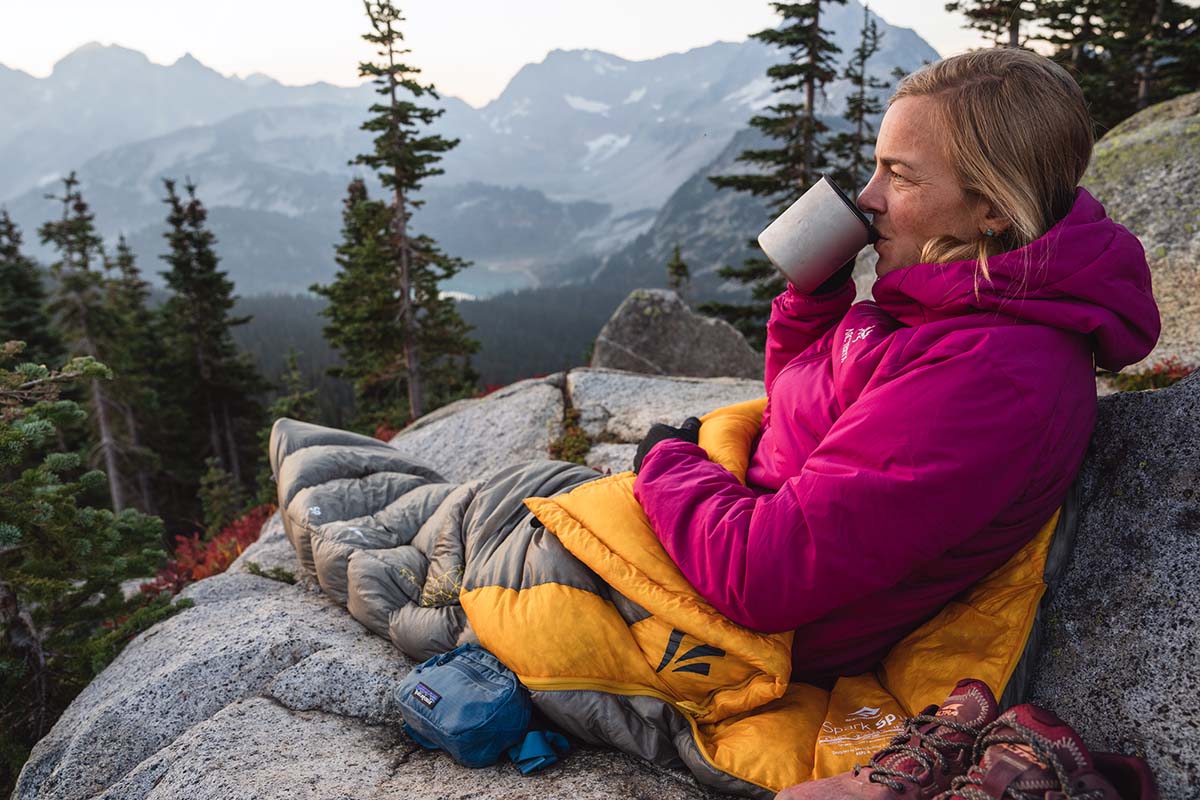
In terms of temperature regulation, both sleeping bags and quilts have strengths and weaknesses. On a cold night, we love zipping our sleeping bag past our neck, cinching the baffled collar, and pulling the hood around our face. And on a warm night, a full-zip bag can turn into a pseudo-quilt by undoing the zipper and using it like a blanket. However, not all sleeping bags are created equal, and with a zipperless or partial-zip model, you’re at risk for overheating on a warm night. Like most things, it's a tradeoff. While full-zip bags have great temperature regulation for a considerable weight penalty, partial-zip or zipperless bags weigh less but don't regulate temperature as well.
Conversely, a quilt has good temperature regulation capabilities for all but the coldest nights. In balmy weather, drape the quilt on top of your body for plenty of ventilation. When the mercury drops, strap the elastic bands around your sleeping pad to cinch it close to your body, similar to a sleeping bag. If you're concerned about drafts, we recommend looking for quilts with broader "wings" at the shoulders to pull around your body (like the 58-inch shoulder width of Hyperlite's 20-Degree Quilt), or choosing a wide option if available. And as we’ve mentioned, when you really want to batten down the hatches, a quilt can’t compete with the draft protection of a sleeping bag.
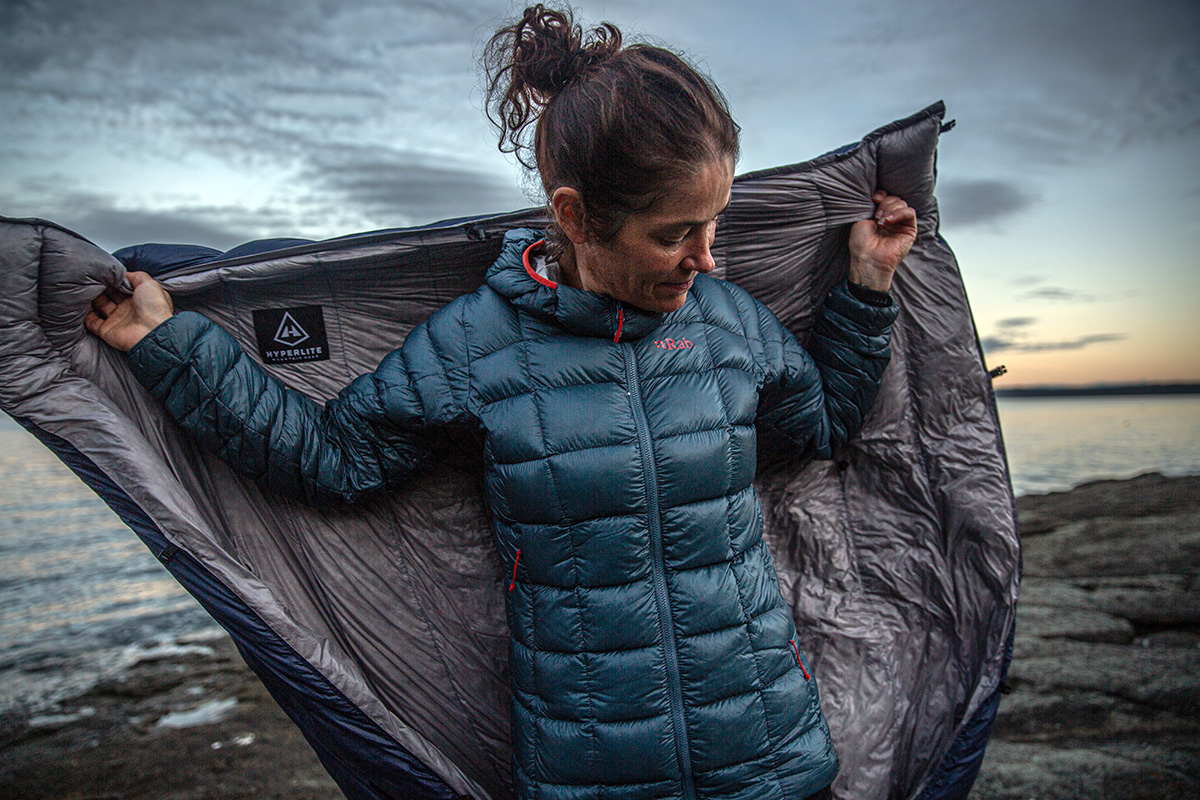
When it comes to setting up your sleep system, sleeping bags have the clear advantage. Simply unstuff your bag, lay it on your sleeping pad, and hop in. Dialing in your quilt, on the other hand, takes a bit more time, specifically if you’ll be attaching it to your sleeping pad or securing it shut via the rear closures. Further, you can adjust the fit on these attachments to customize comfort, temperature regulation, and/or draft protection. As is common with ultralight gear, it pays to “geek out” on your gear, fine-tuning it for your specific use.
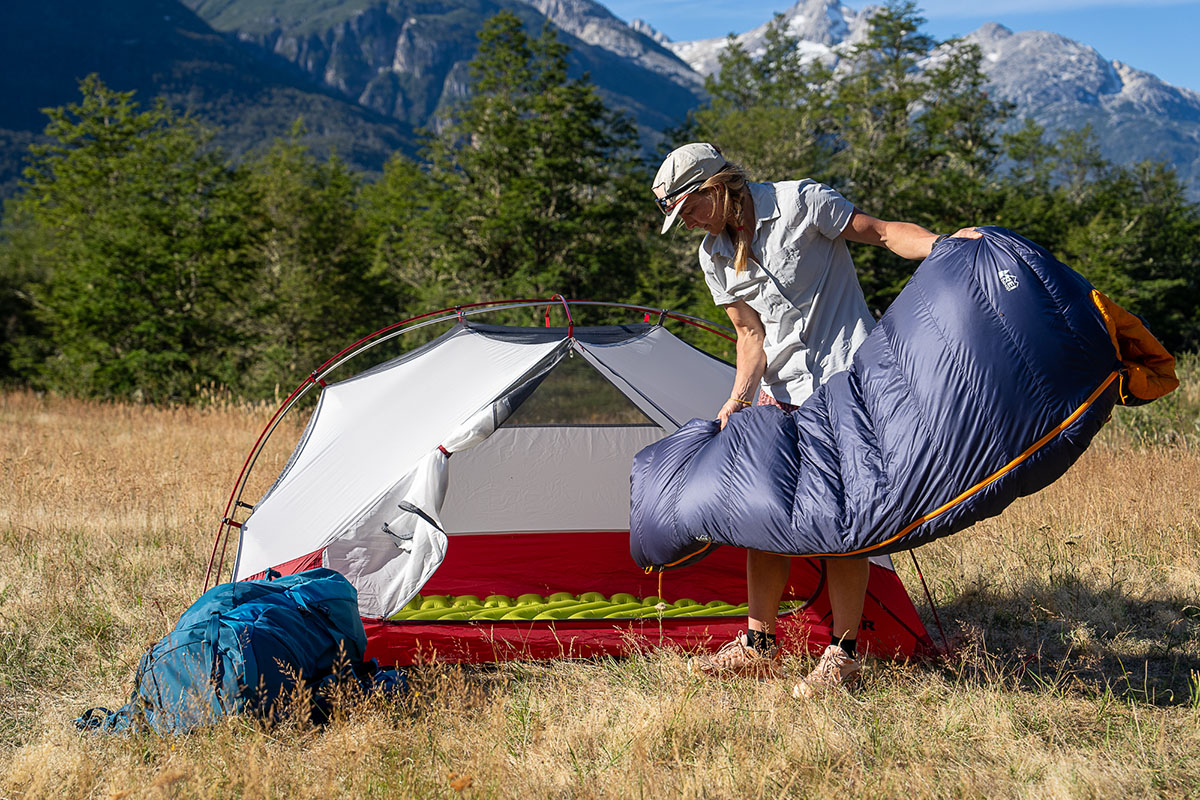
While more mainstream brands are now offering quilts, the majority are still made by cottage brands, with many custom-built to order and only available online. And "custom built" has a lot of significance here: Brands like Loco Libre, Katabatic, Hammock Gear, Enlightened Equipment, and Zpacks allow you to choose between up to 16 sizes (including varying lengths and widths) and add or subtract features such as pad attachments, footbox zippers, extra down fill, more durable shell fabrics, and more. This ability to customize is a huge advantage, especially for those with particularly small or large frames or ounce-counters looking to get exactly what they need (and nothing more).
Given their made-to-order nature, most cottage-brand quilts can have up to a month of lead time. Further, you won’t see them on the shelves of your local store to try before buying, and the temperature rating can be tricky to assess. Since most sleeping bags are made by mainstream brands, they’re easy to find and acquire immediately. However, as we mentioned above, quilts are becoming more readily available, with companies like REI Co-op, Nemo, and Big Agnes trying their hand at the ultralight game. You won’t get the same customization that cottage brands offer, but you do get the convenience of buying quickly and from a major retailer.
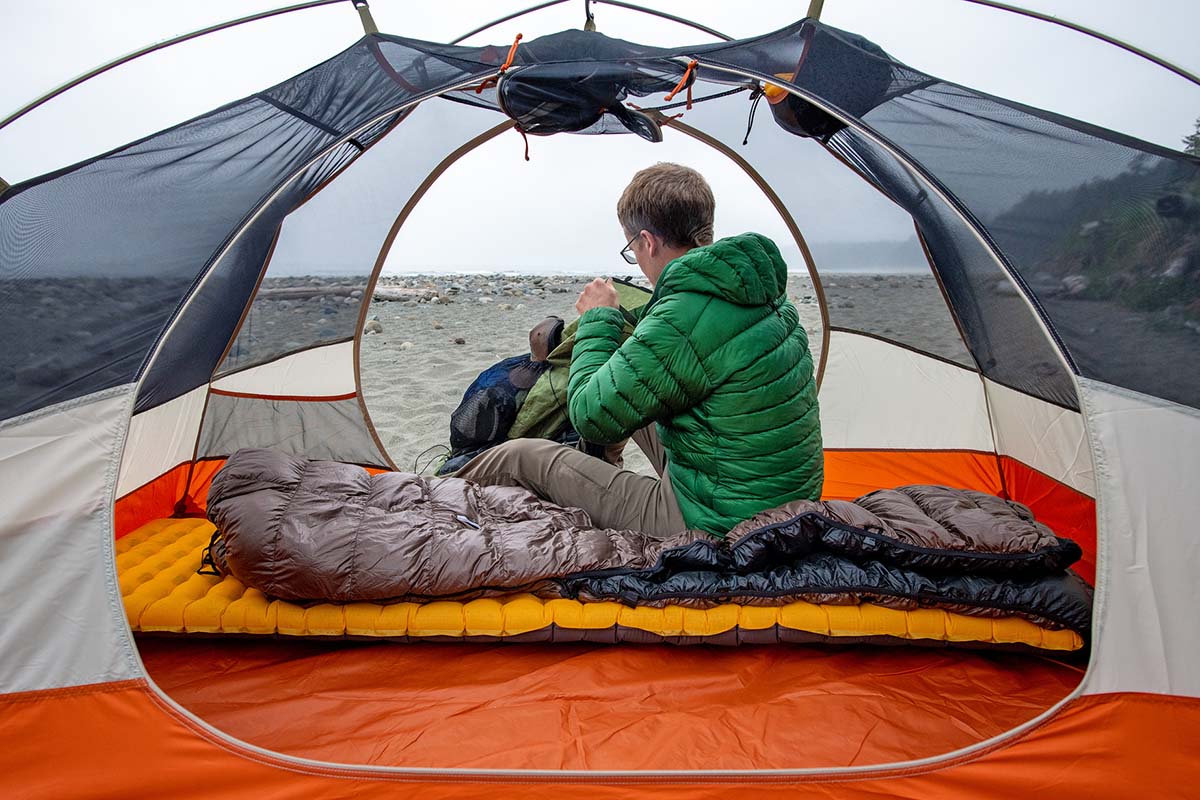
Given that they’re made with fewer materials, you’d expect quilts to be cheaper than sleeping bags—and in general, they are. The average sleeping bag on our list of top ultralight picks is around $440, whereas the average quilt is around $410. However, buying from small manufacturers will typically cost more in both categories. Cottage brands are often more expensive to offset small-scale manufacturing costs, but you'll get a custom build that often has more attention to detail. Buying at a large store like REI, on the other hand, offers a convenient return policy and can be less expensive, but you don't have as many customization options.
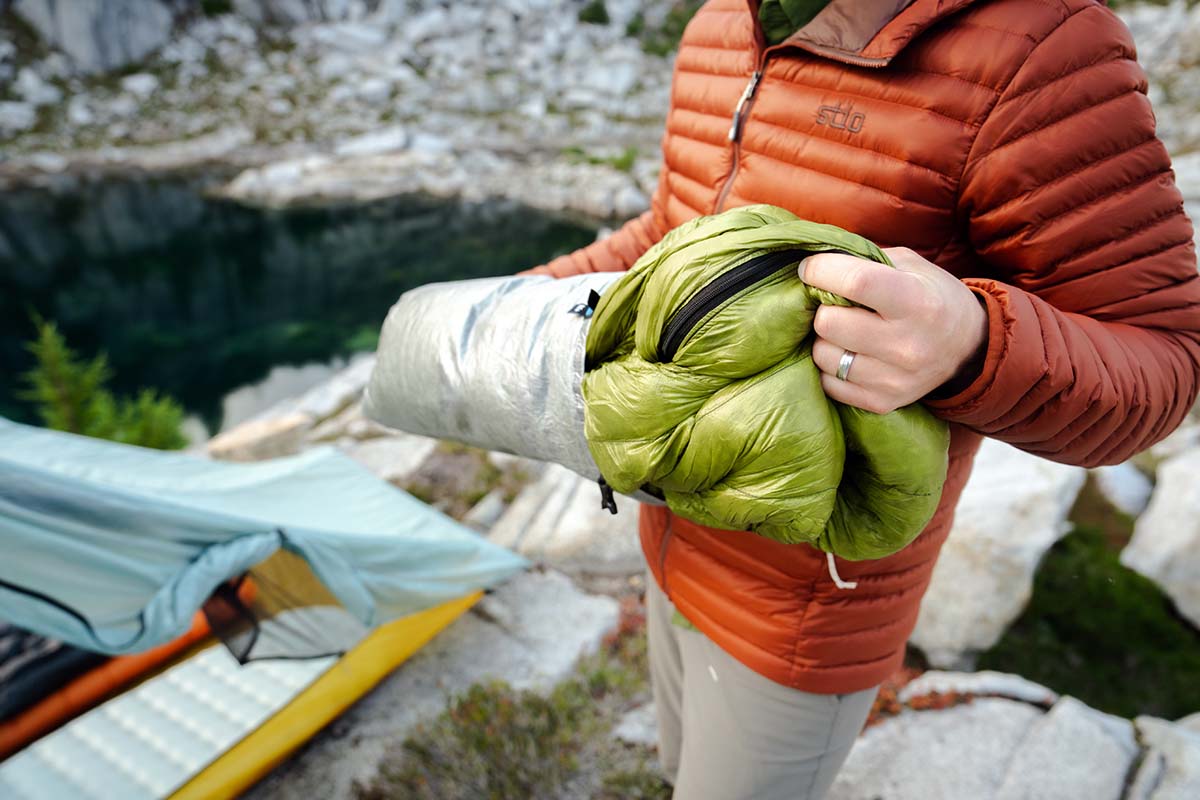
Still wondering if a quilt is right for you? For the right sleeper and the right time and place, quilts can provide a superior combination of weight savings and temperature regulation compared to ultralight sleeping bags. And for what it’s worth, we used to be skeptics, but many of us now opt for quilts. Here are a few final considerations to keep in mind. If you answer yes to most of these questions, it might be time to try a quilt.
Whether you think a sleeping bag or a quilt is the best bet for your needs, below are our top selections for both categories. For a wider look at the market and detailed buying advice to help you choose the right option for you, see our article on the best ultralight sleeping bags and quilts.
Best Overall Ultralight Sleeping Bag: Feathered Friends Hummingbird UL 30
Best Budget Ultralight Sleeping Bag: REI Co-op Magma 30
Best Hoodless Ultralight Sleeping Bag: Feathered Friends Tanager 20 CFL
Best UL Sleeping Bag for Warm Weather: Sea to Summit Spark 45
Best Overall Backpacking Quilt: Enlightened Equipment Enigma
Best Budget Backpacking Quilt: Hammock Gear Economy Burrow
Best Hybrid Sleeping Bag/Quilt: Feathered Friends Flicker UL
Best Backpacking Quilt for Warm Weather: Western Mountaineering NanoLite
Back to Our Sleeping Bags vs. Quilts Breakdown See our Backpacking Gear Reviews